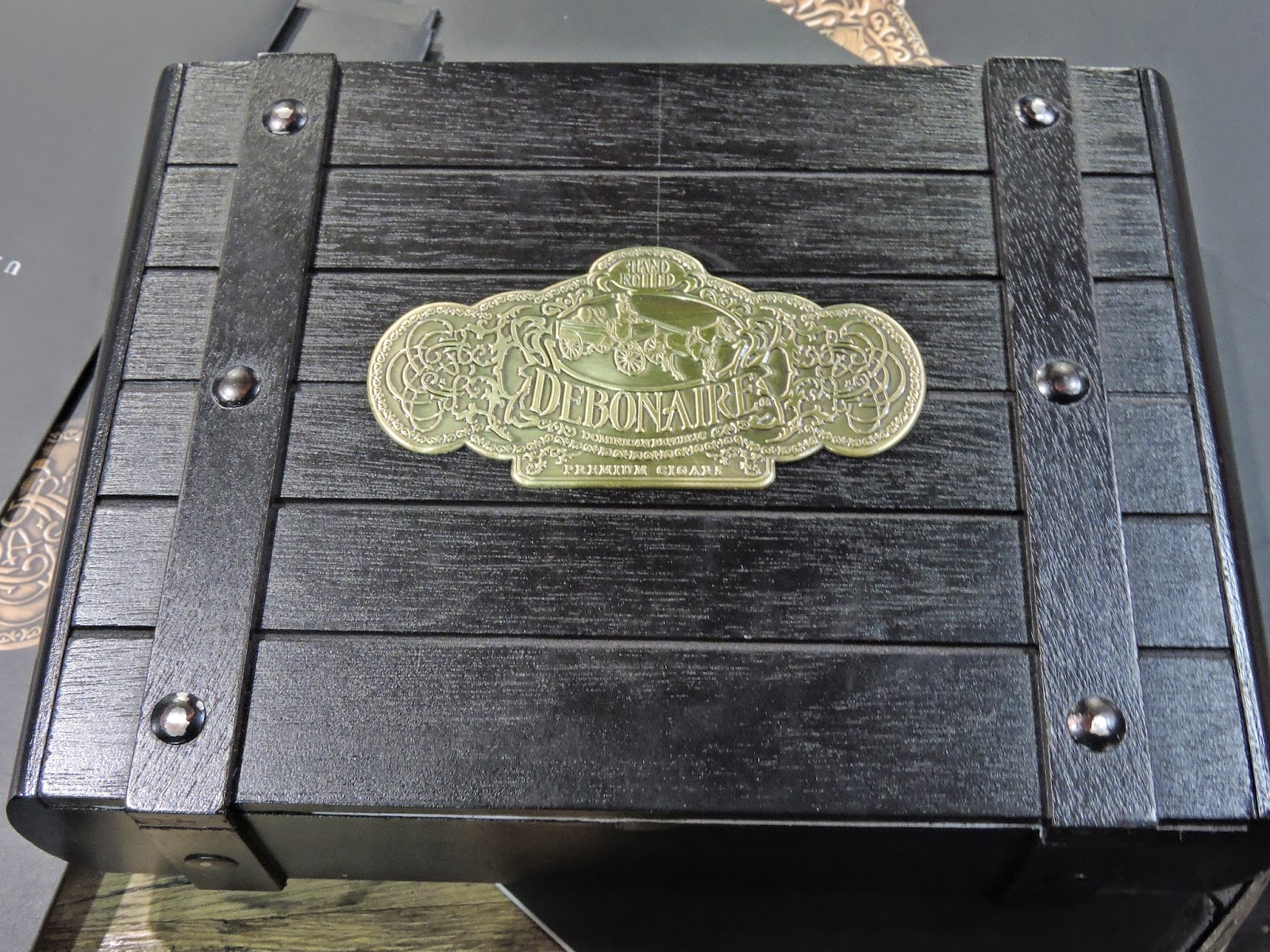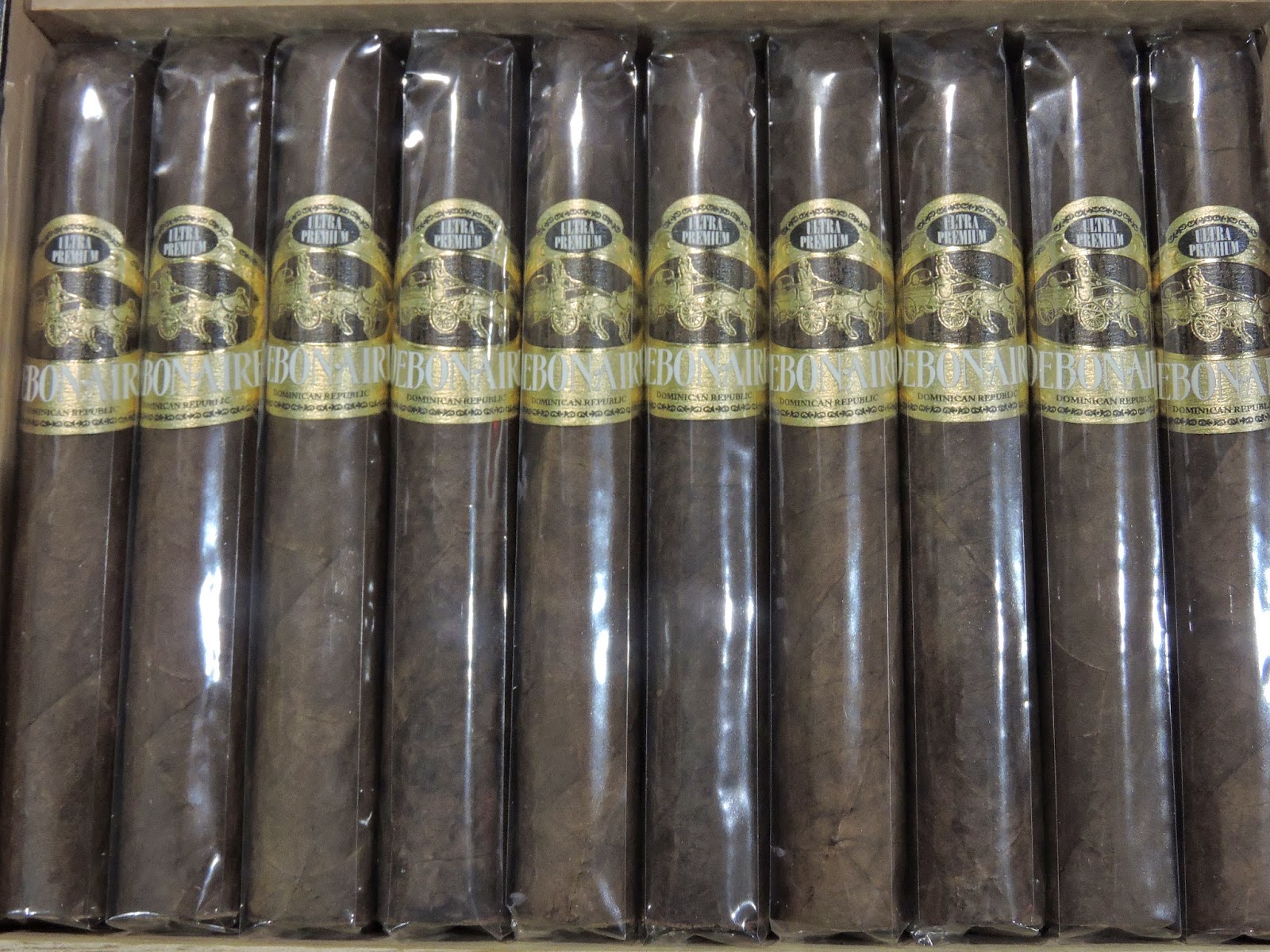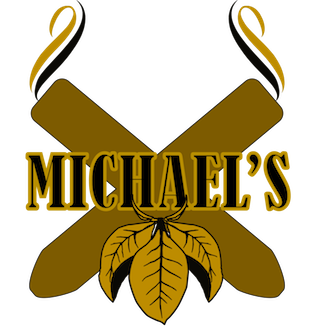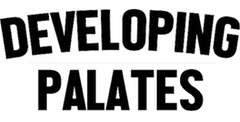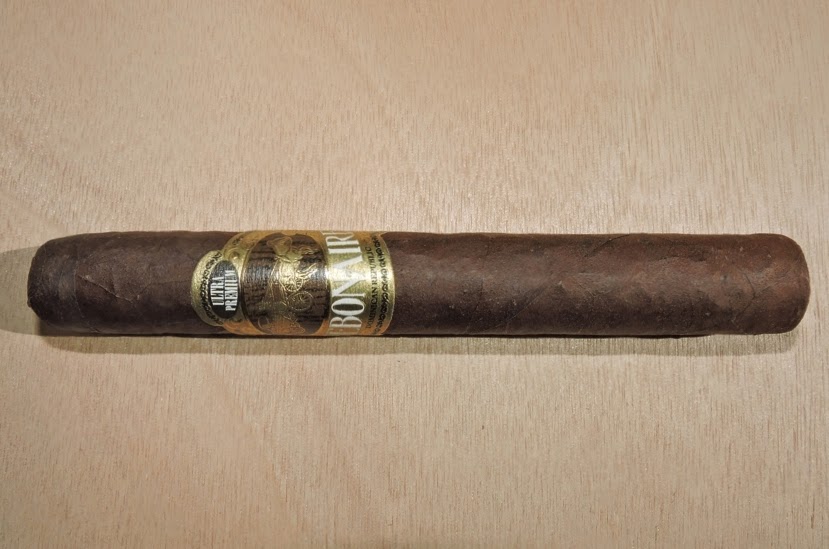 |
| Debonaire Maduro Toro |
Earlier this year, Debonaire Cigars co-founder Phil Zanghi was a guest on Stogie Geeks and broke news on his second blend, the Debonaire Maduro. Several months later, this cigar would make its debut at the 2014 IPCPR Trade Show in Las Vegas. The Debonaire Maduro replaces the Habano wrapper of the original Debonaire line with a Connecticut Broadleaf Maduro wrapper. Like the original Debonaire line, the Debonaire Maduro is also positioned as an ultra-premim line. Today we take a look at the Debonaire Maduro in the Toro size. The original Debonaire habano line has been a one of the big revelations to us on Cigar Coop and Stogie Geeks over the past twelve months – delivering excellent cigars on a consistent basis. With the Debonaire Maduro, this takes things to another lebel.
Debonaire Cigars was founded by Zanghi and Daniel Sinclair. Many people may remember Zanghi from his days with Indian Tabac – the company that eventually became Rocky Patel Premium Cigars. After a hiatus away from premium cigars, Zanghi returned to the handmade premium cigar business. The Debonaire in the habano blend made its debut at the 2012 IPCPR Trade Show.
Without further ado, let’s take a look at the Debonaire Maduro Toro and see what this cigar brings to the table.
Blend Profile
In addition to the Connecticut Broadleaf maduro wrapper, the Debonaire Maduro uses a blend of tobaccos from Nicaragua and the Dominican Republic – similar to the Habano blend. Zanghi and his source tobacco Leo Reyes – one of the leading growers based in the Dominican Republic. The cigars are also made in the Dominican Republic.
Wrapper: Connecticut Broadleaf
Binder: Dominican
Filler: Dominican, Nicaraguan
Vitolas Available
In terms of how the vitolas are constructed, the Debonaire line is bunched using accordion fold as opposed to entubado (tube) style. Zanghi emphasizes leaf placement in terms of being able to achieve the right flavor profile for each size.
The Debonaire Maduro uses the same frontmarks as from the original Debonaire line – except the limited edition Solomones is not available in the Debonaire Maduro.
First Degree: 4 x 44 (Petite Salomon)
Sagita: 5 1/2 x 38 (Petite Lancero)
Robusto: 5 1/4 x 50
Belicoso: 6 x 54
Toro: 6 x 54
The Debonaire Maduro Toro is packaged in 20 count boxes:
Appearance
The Debonaire Maduro Toro has a mocha colored wrapper. Upon closer examination some darker marbling can be seen on the surface. There is a light coat of oil on the wrapper. There are some visible veins and visible wrapper seams that give this the classic rugged look of Connecticut Broadleaf.
The band is the gold, brown, black, and white colored one seen on the original Debonaire line. There is a gold stagecoach that sits on a brown background. Above the stagecoach is a black oval with the text “ULTRA PREMIUM” in white font. Below the stagecoach is the text “DEBONAIRE” in large white font. In small black font below the Debonaire name is the text “DOMINICAN REPUBLIC” in small black font. The remainder of the band has black and gold adornments.
The rear of the cigar band has a hand-stamped date it was packaged and put in the box. The date for the specific cigar is June 25, 2014.
Preparation for the Cigar Experience
Prior to lighting up the Debonaire Maduro Toro, I went with a straight cut to remove the cap. Once the cap was removed, I moved on to the pre-light draw. The cold draw gave me some notes of sweet maduro as well as some pepper. Overall, I considered the pre-light draw of the Debonaire Maduro Toro to be excellent. At this point I was ready to light up the Debonaire Maduro and see what the smoking experience would have in store.
Flavor Profile
The start to the Debonaire Maduro Toro provided a mix of cocoa powder, natural maduro sweetness, and white pepper. The cocoa notes became primary early on. The pepper notes became secondary while the sweet maduro notes were a little more distant. Meanwhile on the retro-hale I picked up a combination of white pepper and cocoa.
By the later part of the first third, some earth notes were now mixed in with the cocoa in the forefront. I was now also getting some of the signature Debonaire au-jus/meaty notes on the after-draw. The pepper and sweet maduro notes were still present in the background.
In the second third, I found the earth notes were primary. The cocoa and pepper notes from time to time crept into forefront from time to time. I was still getting some of the au-jus notes on the after-draw and the maduro sweetness was still very much present. Around the midway point I detected a touch of almond in the background for a short time.
By the end of the second third, the pepper was very much in the forefront with the earth notes. There still was au-jus component on the after-draw. The cocoa and maduro sweetness were much more dialed back at this time. This is the way the Debonaire Maduro Toro finished up. The resulting nub was outstanding – cool in temperature and firm to the touch.
Burn and Draw
The Debonaire Maduro Toro demonstrated the same excellent quality as I have found throughout all of the cigars made by Debonaire. The burn line remained sharp from start to finish and required minimal touch-ups to keep it straight. The resulting ash was firm with a silver gray color. The ash came off the cigar in nice clean chunks. The burn rate and burn temperature were ideal.
 |
| Burn of the Debonaire Maduro Toro |
The draw was to the Debonaire Maduro Toro was open, but not loose. I found this cigar to be a low maintenance cigar to puff on to derive flavors. I also found this cigar produced an ample amount of smoke.
Strength and Body
From a strength perspective I found the Debonaire Maduro Toro to have more strength than the Debonaire habano blends I have smoked. In fairness, most of the Debonaire habano blends did have some more age on them (as indicated by the date stamp on the back). I assessed the Debonaire Maduro Toro as being medium to full in strength in the first half. By the second half the strength moved into the full range. I’m curious to see if the strength comes down a little over time.
As for the body, I also found this had some more depth compared to the Debonaire Habanos I had smoked. As with the strength, the body started out medium to full. By the second third, the Debonaire Maduro Toro was in full-bodied territory. For the most part, I found the strength and body of the Deboanire Maduro Toro balanced each other very nicely.
Final Thoughts
Zanghi has been a guest on Stogie Geeks several times in 2014. He has beamed with pride with the Debonaire Maduro – and rightfully so as this is one outstanding cigar. Zanghi has also mentioned how it has been very important to give this maduro time to allow the sugar content of this cigar to emerge. I’ve had these Debonaire Maduros sitting for almost 90 days. They were smoking good when I first got them and now they are smoking great. This is a cigar that is going to combine all the things you love about a maduro with the signature meaty flavor profile Debonaire has become known for.
There are two standout maduros I have had in 2014. The Debonaire Maduro blend is a part of that group and it ranks as the premier Connecticut Broadleaf released in 2014. While this is a cigar I’d recommend to a more experienced cigar enthusiast, I certainly wouldn’t discourage a novice from trying this. As for myself, this is easily a cigar I’d fight Chuck Norris for a box of.
Summary
Burn: Excellent
Draw: Excellent
Complexity: High
Strength: Medium to Full (1st 1/2), Full (Remainder)
Body: Medium to Full (1st 1/3), Full (Remainder)
Finish: Excellent
Assessment: 4.5 – Fight Chuck Norris for Them
Score: 94
References
News: Debonaire Maduro
Price: $14.50
Source: Provided by Sponsor and Purchased
Stogie Geeks Podcast: Episode 105
Stogie Feed: Debonaire Maduro Toro
(*) Disclaimer: Debonaire Cigars is a sponsor of Cigar Coop / Stogie Geeks. The cigars for this review were still purchased. For a list of retailers to purchase Debonaire, click here.
